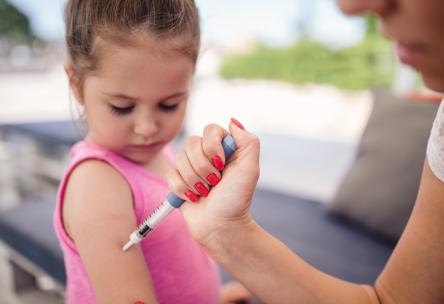Simple strategies to stay healthy during the school year

Healthy eating habits and an active lifestyle are important for children with diabetes. Help your son or daughter with diabetes develop these habits, and help the adults in their life know what to do to provide support.
Make a plan
Work with your child’s doctor to create a Diabetes Medical Management Plan. The plan provides important information, including:
- Daily treatment schedule
- Action plan for an emergency
- Emergency contact information
- Target blood glucose levels and when to test
- Signs of low or high blood sugar
Find a sample Diabetes Medical Management Plan at the American Diabetes Association website, diabetes.org. Go over the plan with your child, and review it with school staff. Share a copy with your child’s teachers, administrators, school nurse, coaches, and any other caregivers. Make sure your child has a copy in his or her school backpack and when visiting family or friends.
Prepare your child
If your child has started giving self-injections or using a pump, practice at home and with the school nurse. Talk about situations that may come up, such as feeling weak or dizzy, and how to handle them. Keep the discussion light so it doesn’t feel like a quiz. Other children will likely ask questions about what it’s like to have diabetes, so help your child come up with answers to feel prepared and comfortable.
Talk about food choices
Starting around first grade, most children are able to help with decisions about food, says Mary Hartley, RD, a dietitian based in New York City. The key is training and practice. Teach your child to count carbs to help keep on track. Work with your child’s doctor, certified diabetes educator, or nutritionist to find how much glucose typically raises his or her blood sugar. Usually around 15 to 20 grams of simple carbs does the trick. Then make a list or poster that shows food choices with this amount: a small piece of fruit, a slice of bread, or 4 to 6 crackers.
Keep a “low box” handy
This is a go-to kit in case of low blood sugar. Put snacks, juice, and glucose tabs or gels in a small box. Leave the box with the school nurse, your child’s teacher, or wherever it’s most handy for your child to reach in the moment. Put a copy of your child’s DMMP in the box, too.


